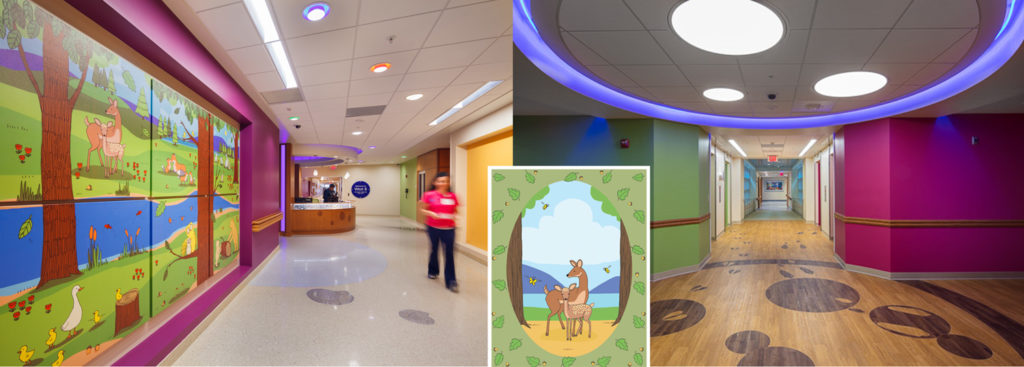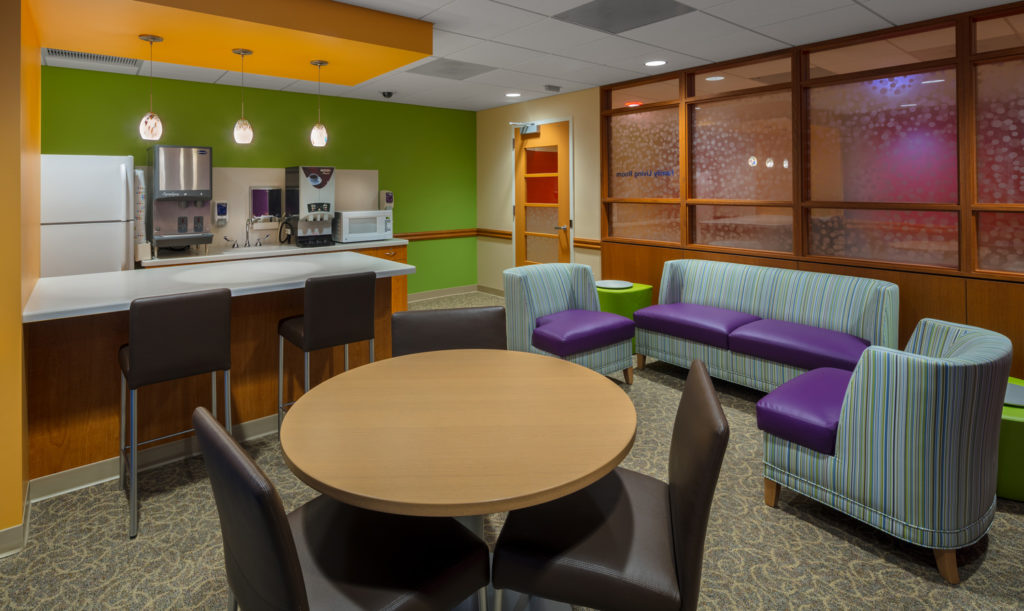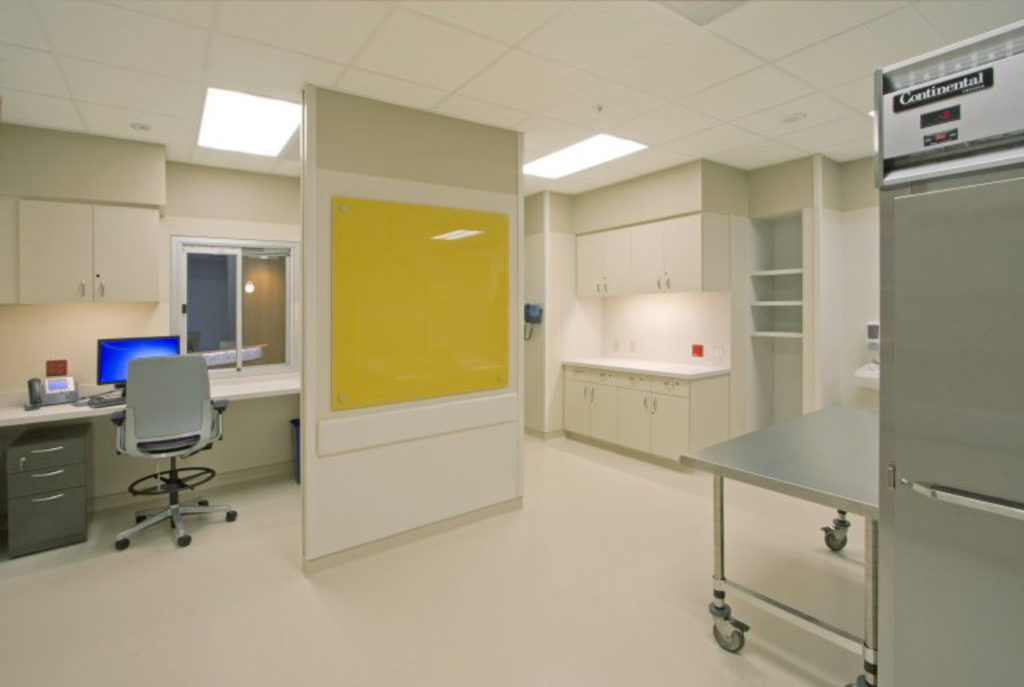One of the things that I find fascinating about working in healthcare design is when we, the architects and designers, become the patient and have our own healthcare experiences in a project we designed. That shift in perspective from designer to patient is always a learning experience. I asked my colleagues at Zimmerman what they learned during their recent healthcare experiences. The responses I received to my informal survey varied, but the main theme was that their best experiences happened when the built environment supported family centered care and allowed them to have positive interactions with healthcare providers.
Designing for a model of family centered care is important throughout a healthcare facility, but especially in the NICU. Parents suddenly have an infant with medical needs beyond the typical newborn’s needs. They need support and education to learn how to take care of their baby. Families can spend days or months in the hospital with their baby, so it really becomes a second home. The design of the NICU can support families during their stay and make it easier for them to be involved in their baby’s care.
Wayfinding
The healthcare facility experience begins with wayfinding. In some healthcare facilities, just finding the front door can be challenging. From the beginning of the NICU project creating an easy wayfinding system for families and visitors was a major driver. The NICU project included a new department entry that is easy for visitors to find after entering Children’s Wisconsin. Within the department, the large 70 bed NICU is made smaller and friendlier by creating 6 neighborhoods. Each neighborhood has a unique color and a Wisconsin animal character to identify it, making it easier for visitors to find patient rooms.

Single Family Rooms
One of the major changes in the renovated and expanded NICU is the use of single-family rooms designed to support family centered care. “Several factors have contributed to the recent popularity of single-family rooms: (1) supportive data on infant outcomes, (2) increased understanding of the value of breastfeeding and kangaroo care (more easily accomplished in a private room), (3) the hospital wide trend toward private rooms for other populations, and (4) the success of innovative prototypes.”
It is important to provide adequate space for family next to the baby’s bed to involve family in the baby’s care and support kangaroo care. Providing skin to skin contact between the infant and parents, known as kangaroo care, has been shown to improve sleep, weight gain and bonding. Adequate space around the bed helps nurses involve parents in their baby’s care and teach them how to do tasks like diapering while their infant is connected to a feeding tube or monitors.

Family Amenities
Families can spend many days and even months in the NICU so providing amenities is very important. Many new parents spend weeks or months in the NICU with their infant, only going home for a short amount of time. The family lounge also provides a space where new parents can connect with other families and share their experiences. Access to daylight and views to outside from the lounge and kitchen help parents take a break and recharge. Sleep rooms are available for parents who need a separate space to get much needed rest. Laundry facilities are also provided for families.


Milk Kitchen
A unique feature of the new NICU is the centralized milk kitchen. “Studies show that premature babies have improved growth and health outcomes when given human milk as opposed to formula. A team of experts including certified lactation specialists, neonatologists, registered dietitians, milk technicians and registered nurses all work together to ensure that each baby gets the precise formula of milk-based nutrition that will help them grow and thrive.” Mothers can use private lactation rooms or the patient room to pump breastmilk. Pumped milk can be stored in the refrigerator in the patient room. Staff then deliver it to the milk kitchen. In the kitchen, milk is analyzed and individually prepared for each infant’s feeding.
Supporting Families through Design
Through the use of design features of wayfinding, single family rooms and family amenities, the family is supported throughout their stay with their baby in the NICU. Most importantly, the design of the NICU allows the clinical staff to provide the best care for their tiny patients and families. The clinical staff aren’t only taking care of an infant, they care for the whole family. For the architects and designers at Zimmerman, it is rewarding to hear what a positive impact design can have on a family’s healthcare experience.
In loving memory of our “Teddy” (11/2020-01/2021) who through his short time on earth, brought so much love. Thank you to the staff at Children’s Wisconsin for your amazing care.


